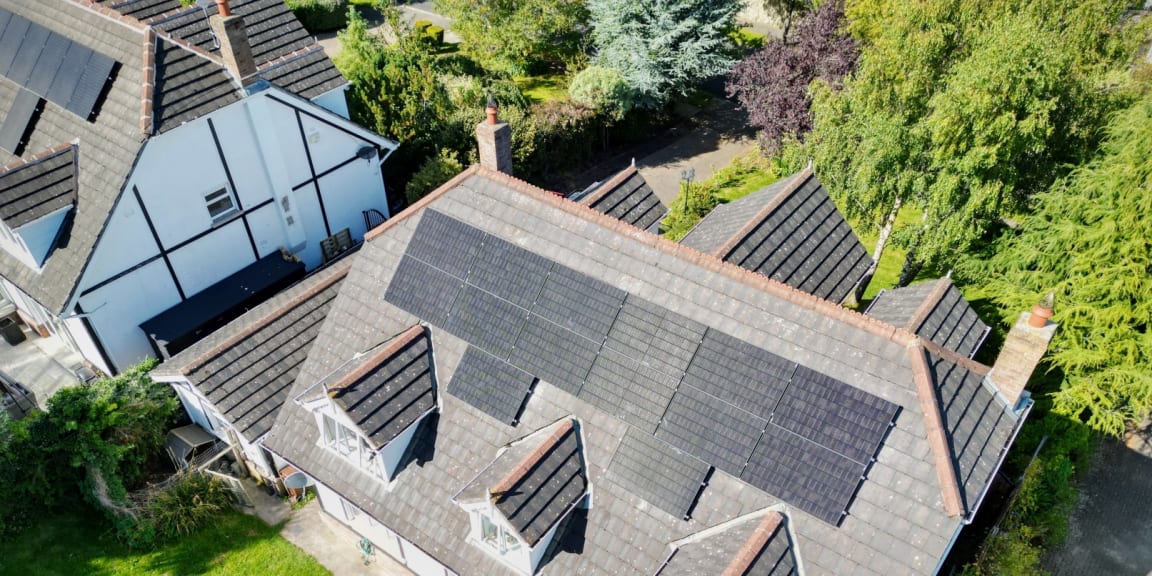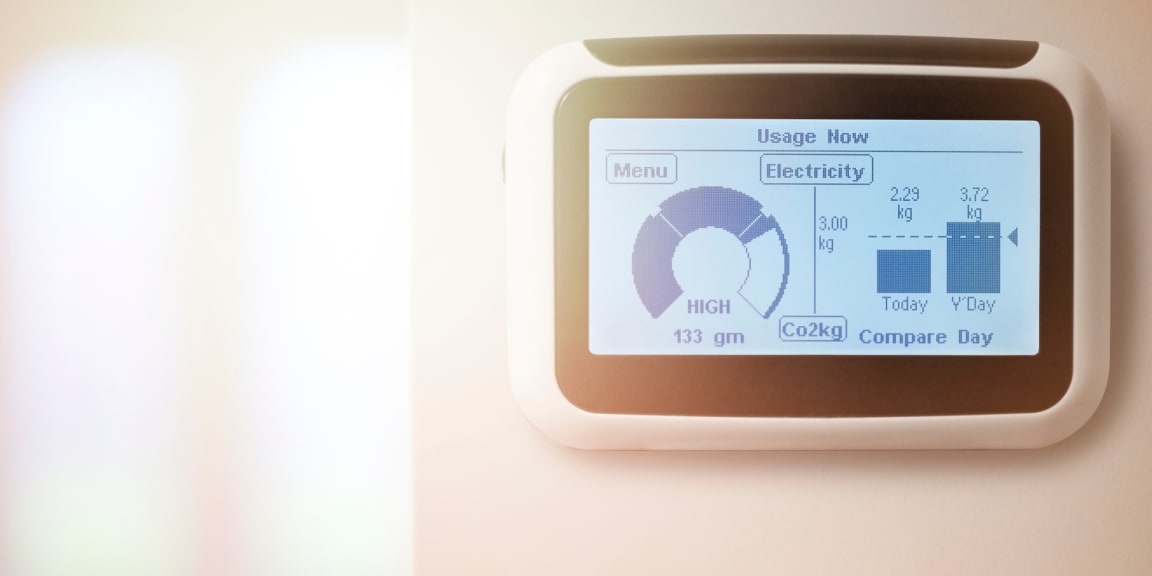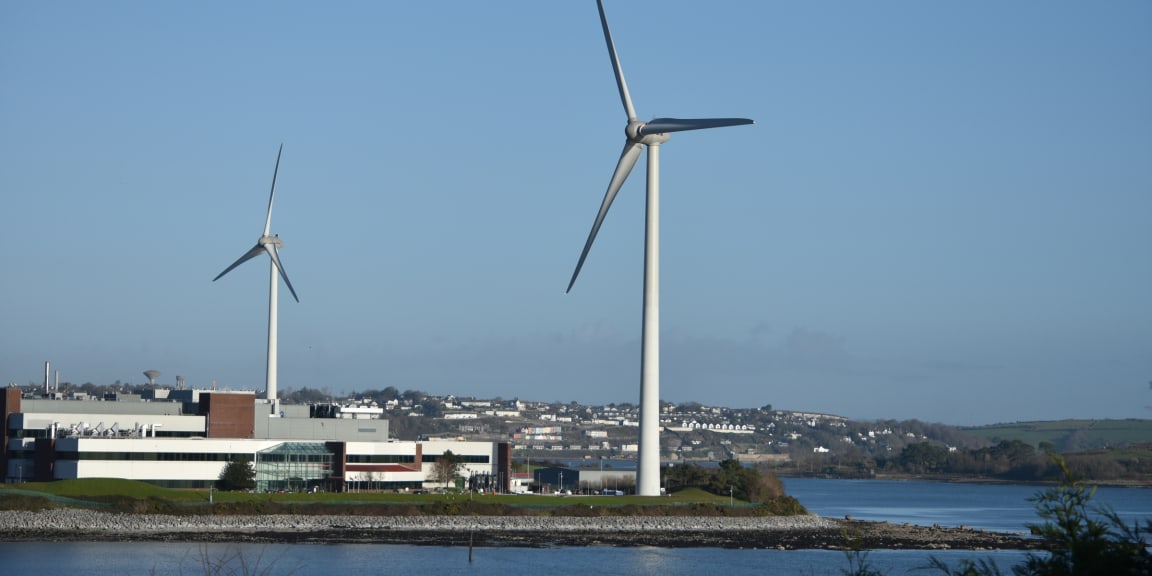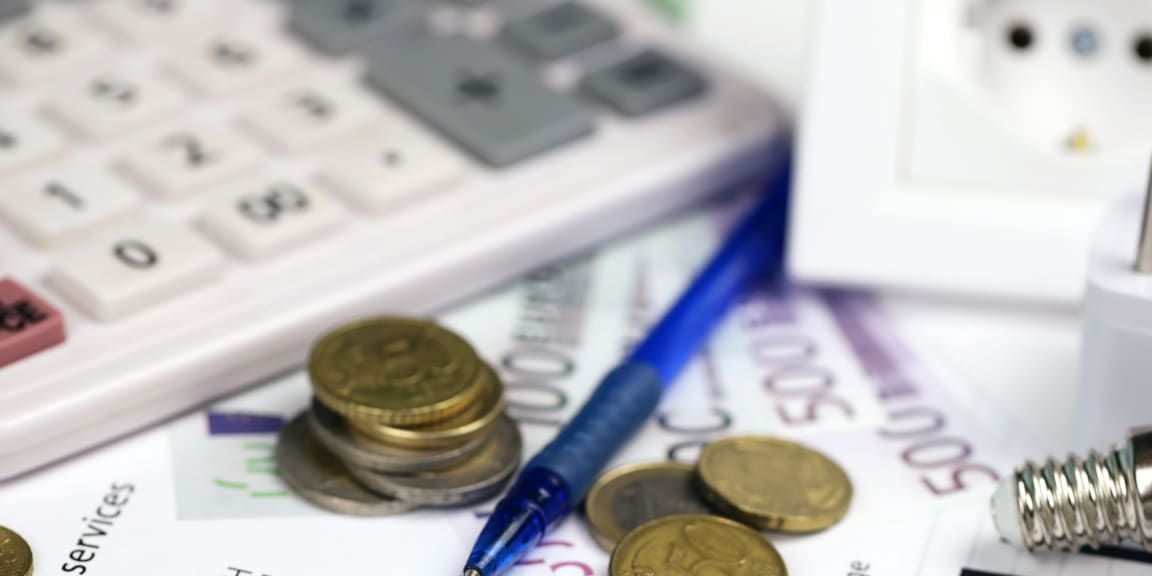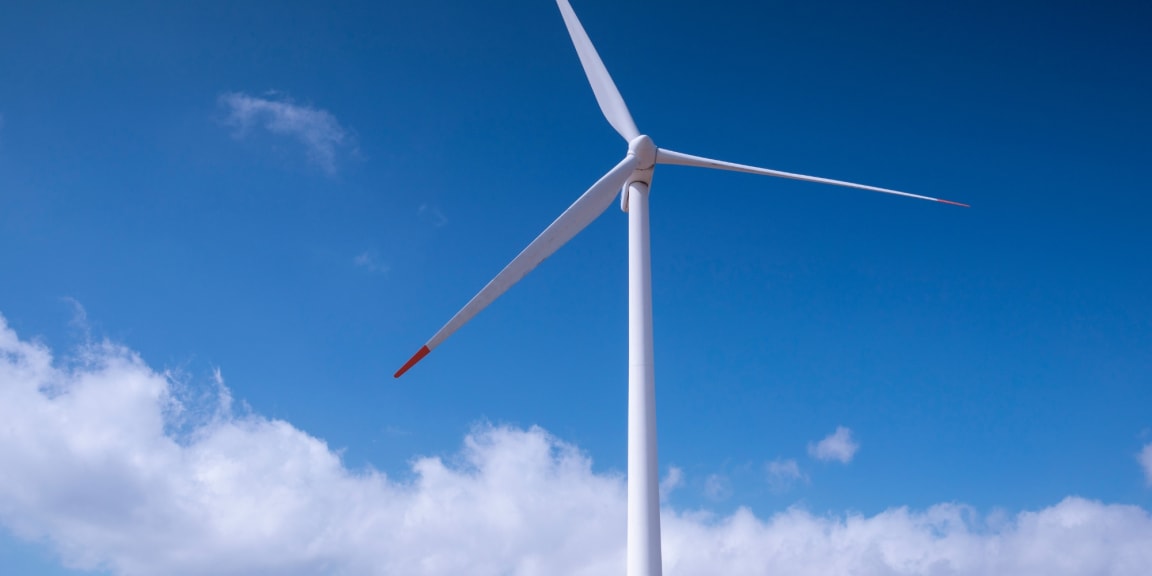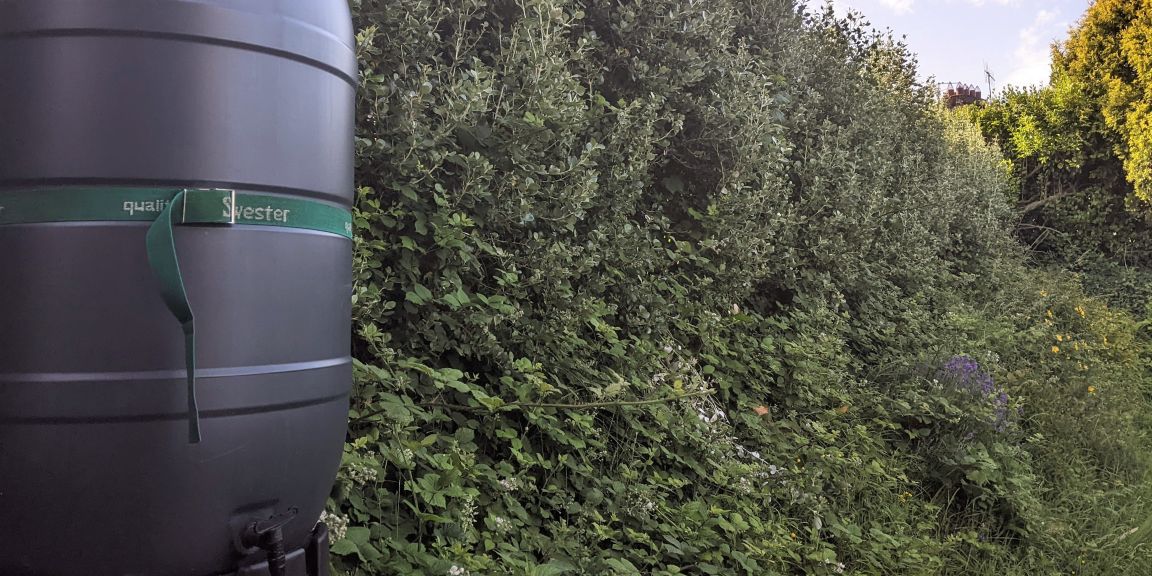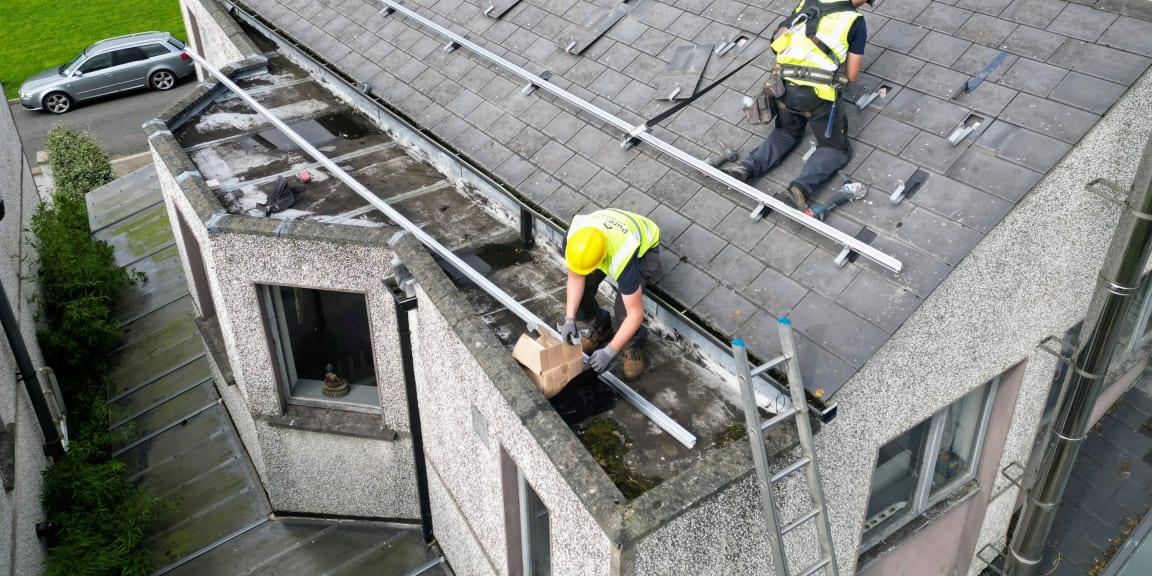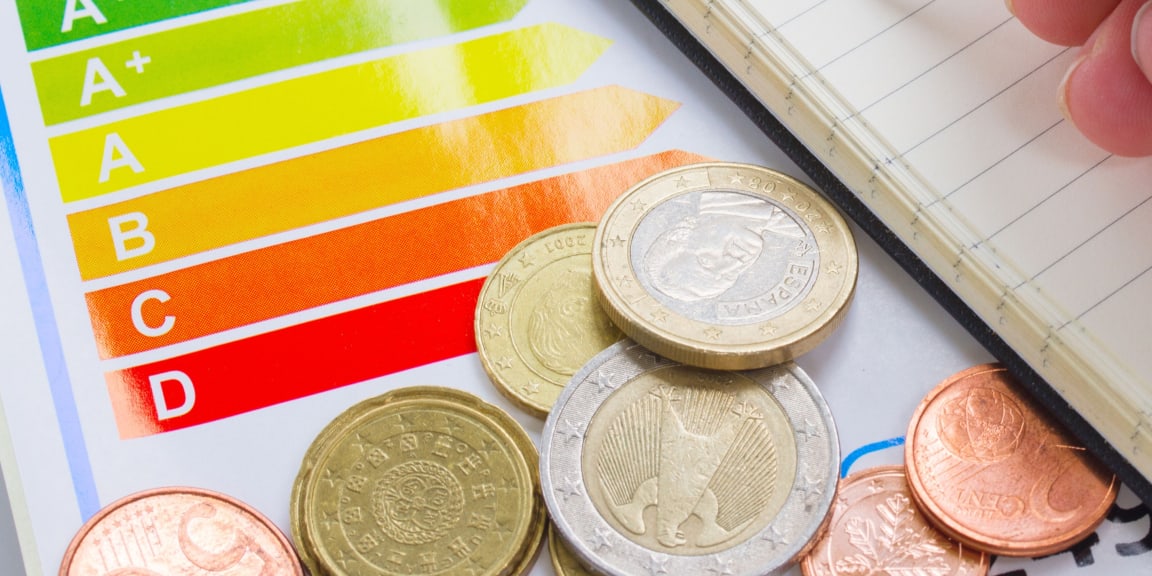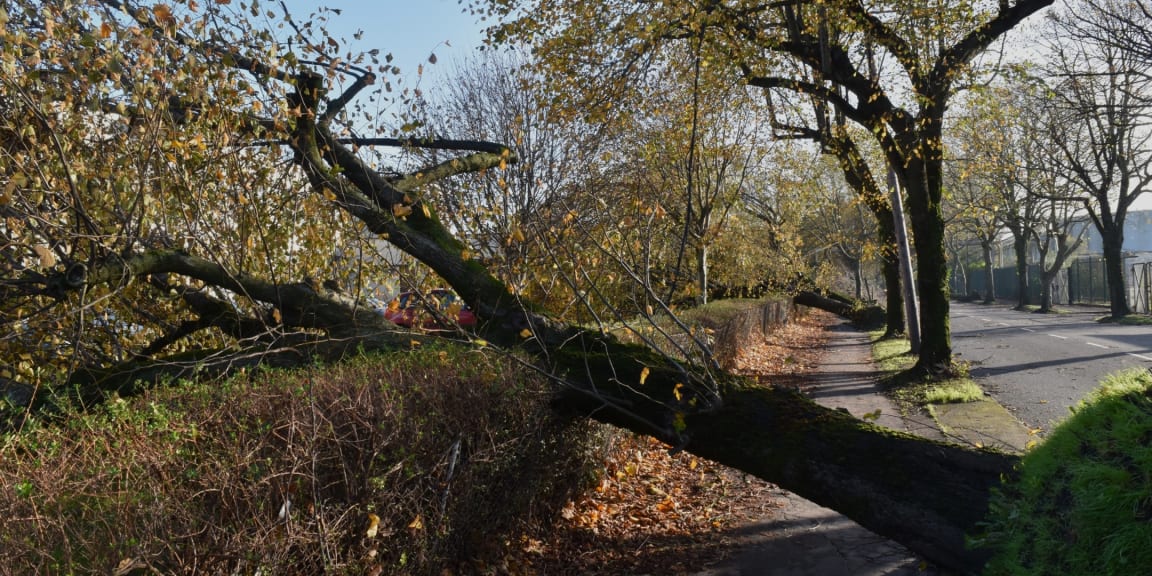
The beginner's guide to solar panels in 2026
Solar panels: an introductory guide
There are multiple parts to a solar PV system, including storage batteries, solar panel roof mountings, solar inverters, and hot water immersion diverters. But the one unmistakable part of a solar PV system is the panels, usually found on the roof.
Whether you're seeking ways to lower your electricity bills and reduce your carbon footprint, or simply want to learn more about solar panels, this page will provide you with all the information you need. What actually are solar PV panels? How do they work? And what are the pros and cons of going solar in 2026?
What are PV solar panels?
PV Solar panels, also known as Photovoltaic solar panels or electric solar panels, are the type of solar panels that produce electricity. When daylight hits the panels, they will begin to start producing electricity.
Another, older type of solar panel is the thermal solar panel. These panels produce hot water directly and were the most commonly installed type about 10 years ago. They are much less popular in Ireland due to the huge price drop in PV solar panels and their lower maintenance. The electricity generated by PV panels can be used for more than just direct consumption; it can also produce hot water, offering you the best of both worlds.
How much electricity do solar panels produce in Ireland?
Peak production (in kWp, or kilowatts)
Most PV solar panel systems are quoted in kW peak (or kWp). If someone talks about a 3.5kW system, that's the peak production their solar panel could generate in perfect lab conditions. Realistically, in Ireland, your solar panels might top out at about 90%-95% of this in the middle of a perfect summer's day.
Annual production
Most of us are more concerned with the total number of units of electricity produced over a year, though.
1kWp of solar panels in Ireland will generate about 860 units (kWh) of electricity per year. This is for a typical Irish house somewhere in the middle of Ireland.
Here's how that works for average house sizes:
Typical two bed mid-terrace house
- Solar array size: 3.52kWp
- Roof area covered: 16.9m2
- Annual generation: 3,115kWh (units of electricity)
Typical three bed semi-detached house
- Solar array size: 4.4kWp
- Roof area covered: 21.2m2
- Annual generation: 3,894kWh (units of electricity)
Typical four bed stand-alone house
- Solar array Size: 5.28kWp
- Roof area covered: 25.4m2
- Annual generation: 4,673kWh (units of electricity)
Typical six bed stand-alone house
- Solar array size: 7.04kWp
- Roof area covered: 33.8m2
- Annual generation: 6,230kWh (units of electricity)
The numbers above are based on a typical house with a south-facing roof in central Ireland. If your roof faces south-east or south-west, production will be about 5% lower. For east- or west-facing roofs, production will be approximately 20% lower.
Please note, that these are back-of-envelope numbers to give you a rough guide. In any quote, we'll give you more accurate numbers for your home.
Which direction is best for solar - East / South / West?
Due South: most power output
A south-facing roof will produce the most electricity. Being a bit off directly south though has minimal impact on production. Anywhere between south-east and south-west will be very similar.
South East / South West: ~5% lower
If your roof faces south-east, or south-west, then your production will be around ~5% lower on a typical 30° sloped roof. The timing of your electricity production will change too. South-east roofs produce more energy in the morning, while south-west roofs generate more in the afternoon and evening, making them slightly more beneficial for most households.
East / West: ~20% Lower per panel, but double the roof area
If your roof faces due east, or due west, the production will be about 20% lower than a south-facing roof on a typical 30° sloped roof.
One big advantage of an East & West-facing roof is that you can fill the whole roof with solar panels. Giving you twice the area to work with compared to a North / South roof, where you can only use the south-facing half.
There's another benefit to east / west-facing solar arrays too, as they produce the most electricity when you need it most. Homes typically use the most electricity in the morning (when east-facing panels are generating power) and in the late afternoon or evening (when west-facing panels are producing).
East- and west-facing arrays have a strong advantage because they reduce the need for battery storage, allowing you to use the generated power directly.
Northerly: not worthwhile in Ireland
As you move to pointing north, the production from solar panels rapidly drops off, and we would not recommend it as a good financial or carbon-footprint-reducing investment. The only exception is shallower pitched roofs, which experience less of the northerly drop-off compared to steeper roofs.
Advanced and other questions about solar panels
This section is for those with more advanced questions about solar panels. If you have any other questions about solar panels, please don't hesitate to get in touch.
Do solar panels work on cloudy days?
Yes is the short answer. Solar panels will produce electricity in all weather conditions, including cloudy or rainy days.
Their production is impacted though by heavy clouds. Light hazy clouds have a small impact. Days with thick, dark clouds that keep the entire day overcast can significantly reduce electricity output from the panels, especially on the worst days compared to a clear, blue-sky day.
Here is a graph showing a month of production from a domestic solar installation in Cork (May 2022), which experienced fairly variable weather. The graph highlights three days of particularly severe weather, where heavy, dark clouds caused significant drops in solar panel output. On the other days, you can observe minor variations in output due to typical weather patterns with lighter clouds.
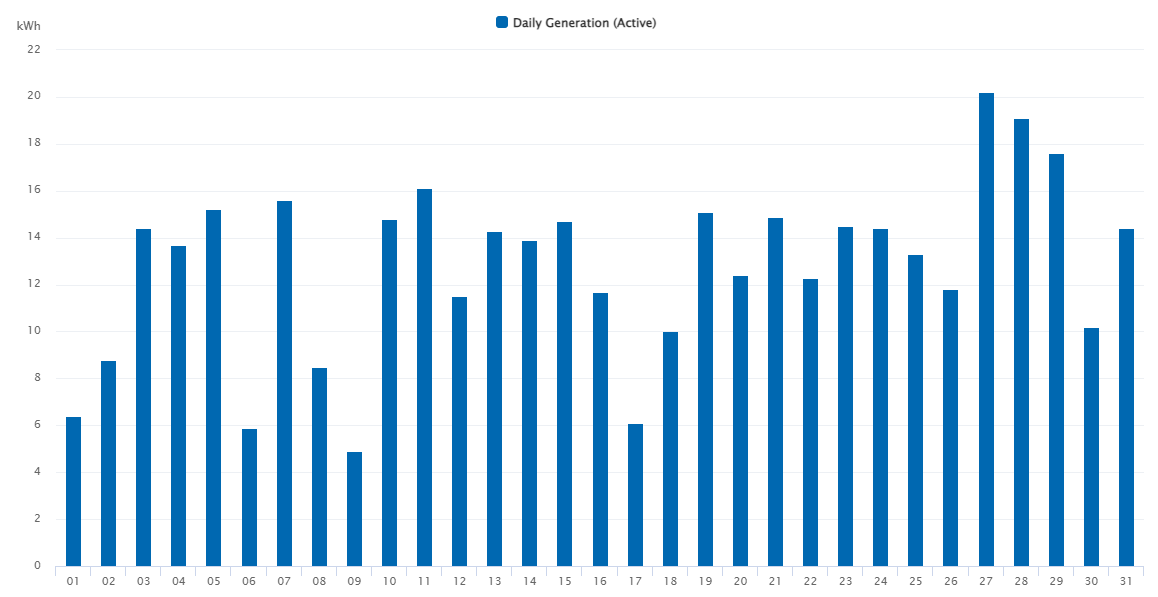
How clouds affect solar panel production here in Ireland We also provide solar solar PV case studies featuring live production data. These are updated daily with electricity production figures from various solar installations we've completed, offering you real, unbiased data to help with your solar planning. They are particularly useful for understanding how daily weather conditions can impact solar output.
Clouds and weather are calculated into our quotes
When we generate quotes for solar installations in Ireland, we factor in the weather for the region that you are in. This includes the normal weather patterns, including cloudy and wet days. We use the sunshine data from the nearest weather station to your home. (So yes, quotes in the sunny southeast for places like Waterford, Wexford, Kilkenny and alike have slightly higher production figures than the same installation in a cloudier part of the country!) This means the predicted generation figures on your solar quote should be about right for realworld conditions.
Standard solar panel sizes / dimensions
Your standard domestic solar panel size is 1722mm x 1134mm. A slightly longer size though is becoming quite prevalent as a new standard - 1762mm x 1134mm (60mm longer, same width)
They would be the typical solar panel sizes in Ireland, but you can get a range of other sizes too. Smaller panels are available, and often on commercial / business solar installations, we will use larger panels where we are working with much larger roof areas.
Roof area needed
We have built a very handy calculator for you there, where you can see the roof space needed and how much power you'll generate.
How do solar PV panels work?
When daylight hits the solar panels, it causes electrons to move within the cells, generating an electrical voltage. This voltage is captured by the conductors (the fine grid-like wires visible on the solar cells) and then transferred to the output cables.
The electricity generated is a DC (direct current). The voltage depends on the number of panels connected together and how sunny it is, though it can be up to 500v or more on a larger string of panels. The voltage then travels through solar PV cables to an inverter, usually located in the attic. The inverter converts the DC (direct current) electricity into AC (alternating current) electricity and adjusts the voltage to 240V to match your home's requirements.
What are the benefits of solar PV panels?
Below is some information on the benefits of installing solar PV panels.
Reduces Electricity Bills — Solar PV is a proven technology that will help reduce your electricity bills.
Government incentives -Currently, grants of up to €1,800 are available for installing solar PV panels.
Make money from excess electricity - You get paid by your utility company for any excess electricity you generate and export back to the grid.
Low Maintenance — Solar PV panels have no moving parts, so they require minimal maintenance. Typically, the only maintenance needed is occasional cleaning if the rain doesn't remove any debris.
Locking in Electricity Prices — Solar PV is a way of protecting yourself against rising electricity prices. By installing solar panels, you lock in the cost of your solar electricity. Over the next 25 years, when electricity prices are likely to rise significantly, your solar energy costs will remain unchanged.
What are the disadvantages of solar PV panels?
Solar isn't for everyone and isn't suited to all homes, check out below, some disadvantages.
Upfront Cost — While the cost of owning a solar PV system has come down substantially over recent years, the initial upfront investment is considerable.
You are effectively paying for your electricity all in one go at the start. Unfortunately, for energy-poor households, that would benefit substantially from solar energy, this can be a stretch too far economically.
Weather — Although solar energy can perform during cloudy and rainy days, the efficiency of the solar system drops.
Battery storage is expensive — Electricity generated from solar energy must be used immediately, or it will be sent back to the grid. To maximize the use of your solar panels, you can store surplus energy in batteries.
Space — Solar PV panels require a lot of space, and some roofs don't have enough. To harness more electricity, you need more solar PV panels to capture as much solar energy as possible.
What are the costs of installing solar PV panels?
The cost of solar panels depends on your monthly electricity usage and spending. Additionally, the amount of roof space available will determine how many panels you can install, which in turn affects the overall cost.
The cost of solar panels also varies depending on the installer. It's always a good idea to get at least three quotes from different installers to compare prices.
For more details, we have a comprehensive guide to solar panel cost and benefits in Ireland. It includes information on costs, payback periods, electricity production forecasts, and carbon footprint reduction estimates.
Are solar panels environmentally friendly?
Yes, indeed they are. Solar energy is one of the cleanest forms of energy on earth. Solar PV doesn't use water to operate or release harmful chemicals or substances.
The carbon footprint of an average solar photovoltaic (PV) system is between 14-73 grams of carbon dioxide equivalent (CO2e) per kilowatt-hour (kWh).
Although this sounds like a lot for a renewable energy source, it's relatively low compared to the average emissions of burning oil - 742g of CO2e per kWh.
How long do solar panels last?
Solar panels are designed to last up to 25 years. Many solar manufacturers have warranties that are up to 30 years. A 25-30 year warranty doesn't mean the panels will stop working after this period; it means the manufacturer guarantees their output for that duration.
It's very likely that the solar panels will continue to produce energy after 30 years, though there may be some degradation in their output over time.
How it Works:
Initial design & quote
Based on your Eircode and a few other bits of information from you, we will send you a free initial quote and design proposal. Using satellite imagery of your house, we can generate a pretty accurate design including price, electricity production forecasts, what grant you might get and how long it will take for your PV system to pay for itself. All we need from you is this quick and easy form.
Site Survey
The next step is for one of our engineers to come and view your property. They will discuss everything with you in detail, and will inspect everything from your roof to your electrics. Based on this, we may make some improvements to your design to make sure it fits your exact needs.
Finalised proposal
Within a day or two, we will send you a full system design proposal along with a finalised quote. Your solar engineer will follow up to go through everything with you and answer any questions you may have.
